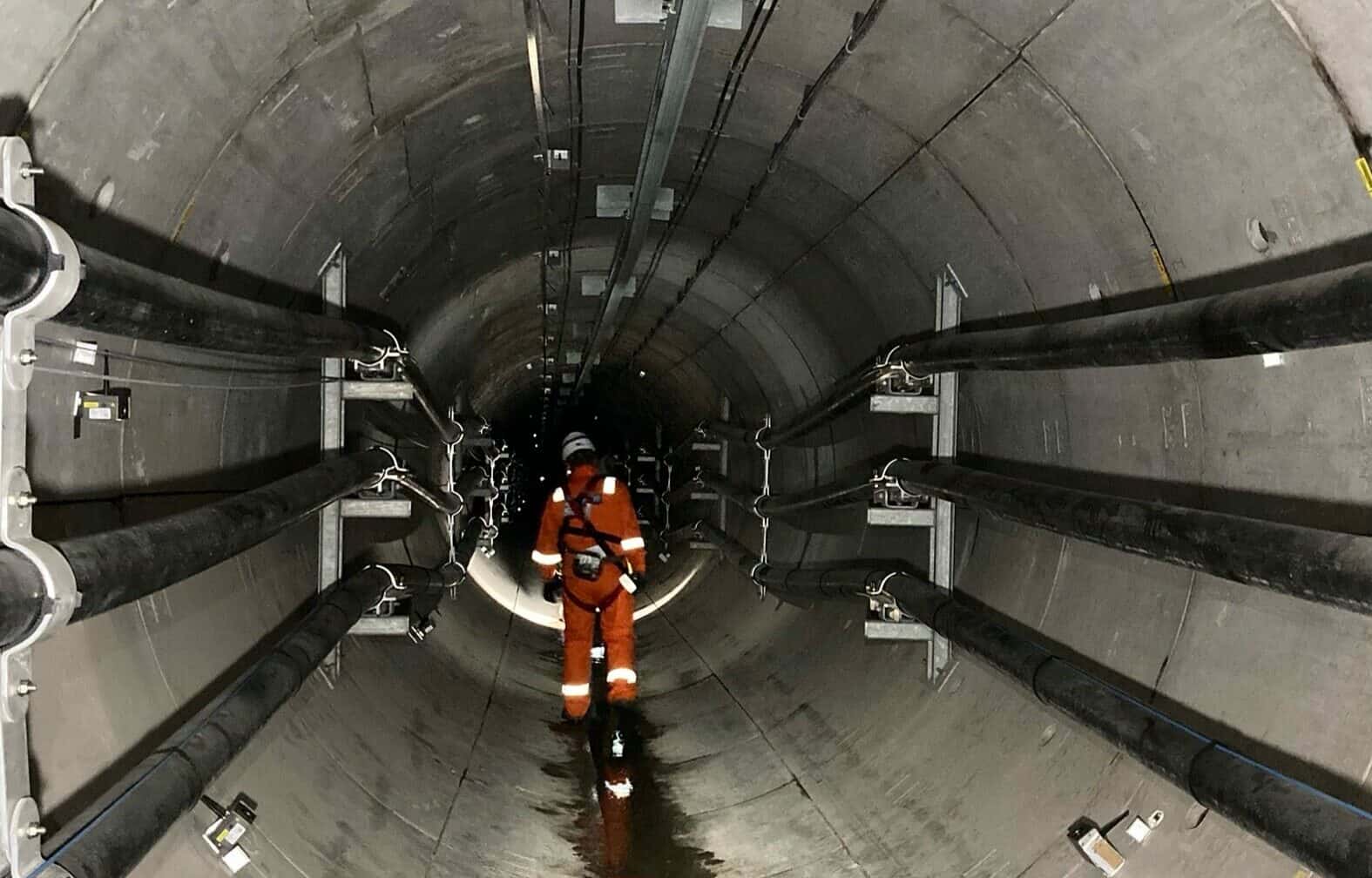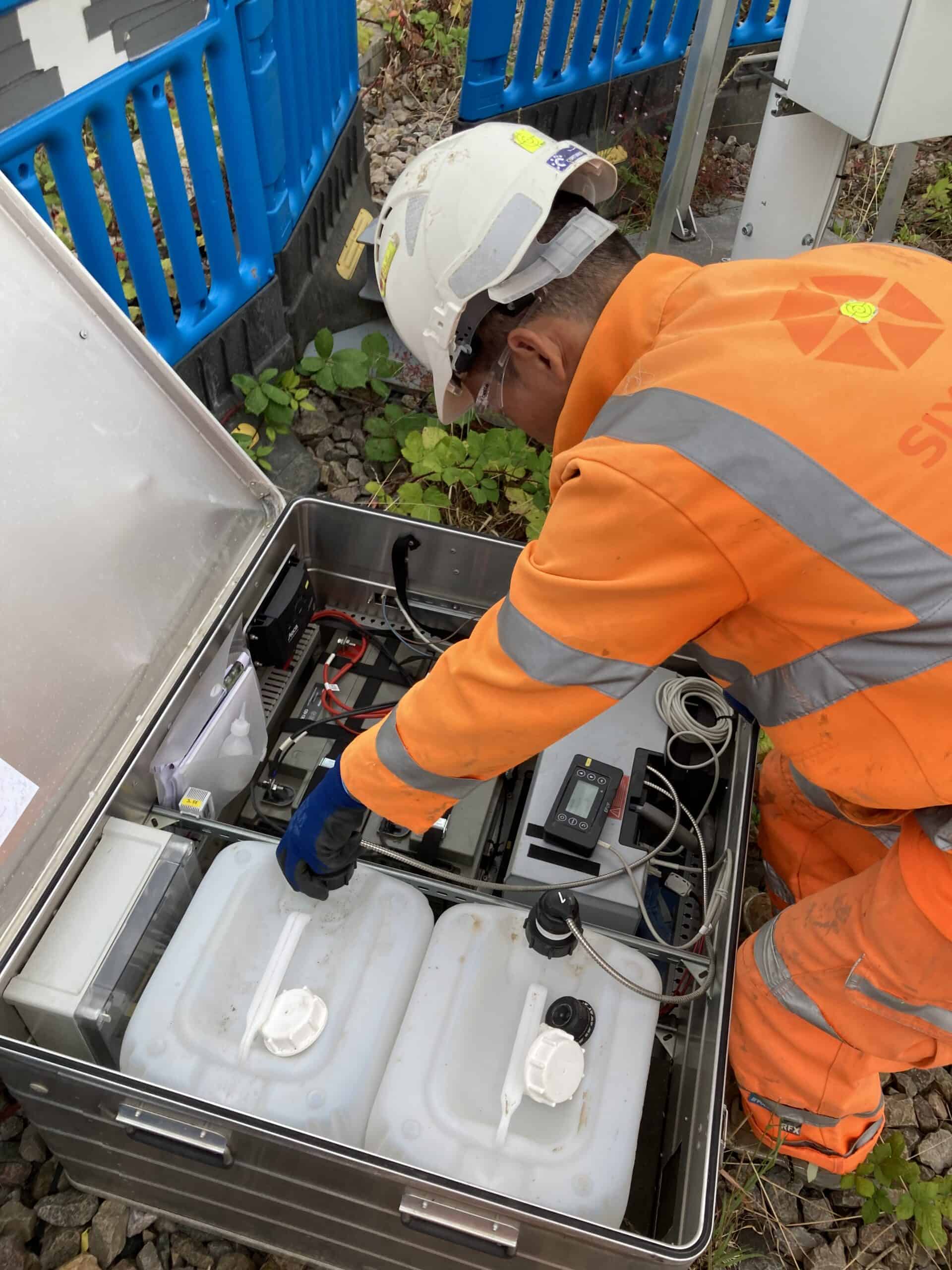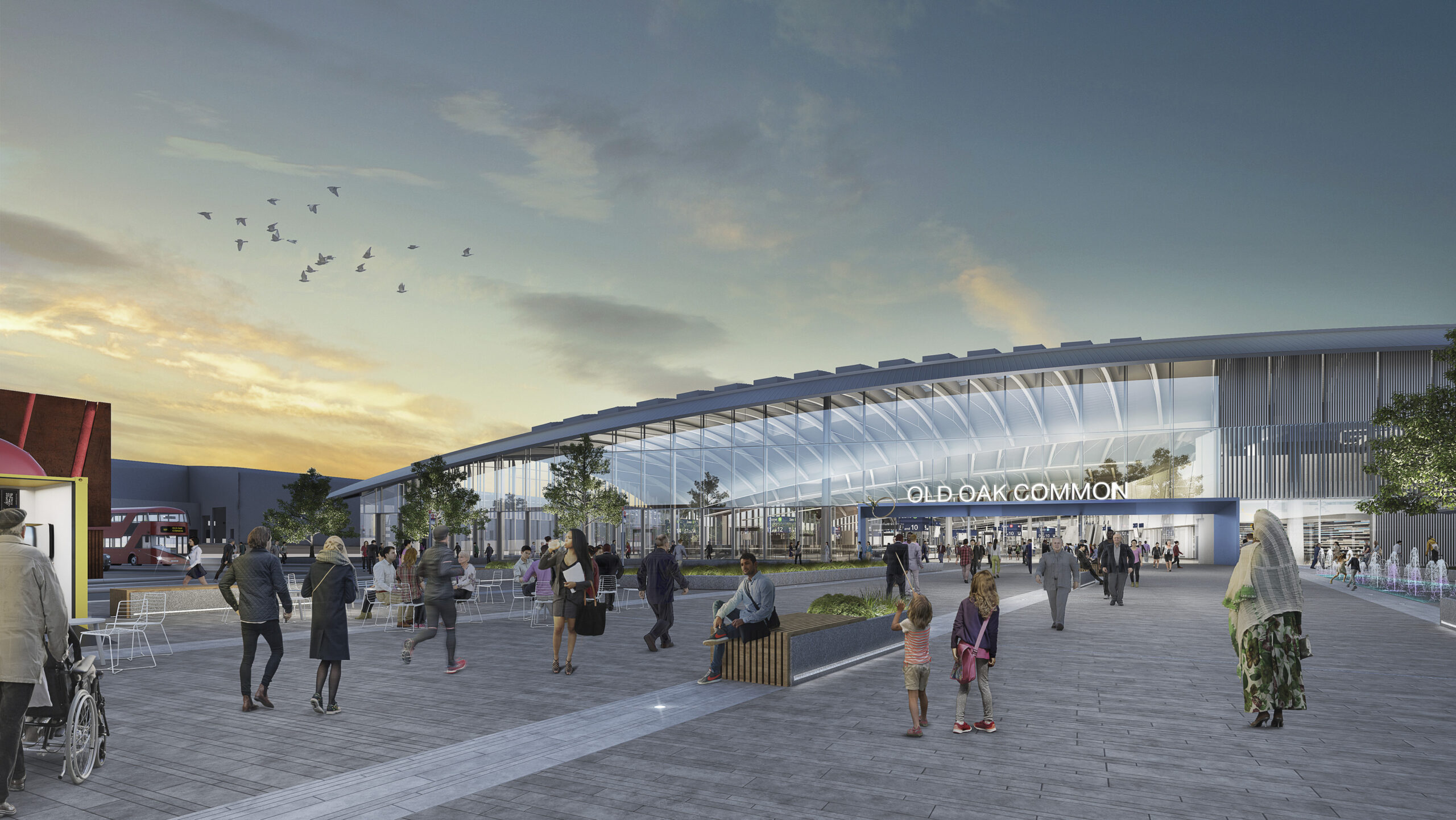HS2 – Old Oak Common
Project summary
Images of the project
Old Oak Common Station will be a new transport superhub in West London offering quick, reliable, and comfortable journeys to the Midlands, the North and Scotland, as well connections into central London, the West Country and South Wales.
Not only will the station offer journeys on the high-speed network, but it is also being built with connections to GWR, Elizabeth line, and Heathrow Express services. It will be the 42nd stop on London’s new Elizabeth line enabling passengers to get to the West End in 10 minutes, Liverpool Street Station in 20 minutes and Heathrow, via either the Elizabeth line or the Heathrow Express, also in 10 minutes. This once industrial area is being transformed into a thriving super-connected neighbourhood and building a legacy for generations to come. The station will provide a world-class interchange for an estimated 250,000 passengers each day and will be a gateway into Old Oak and Park Royal, one of the largest regeneration sites in the UK.
The new station is being constructed by Balfour Beatty Vinci Systra JV (BBVS JV) and includes a 20-metre-deep underground station box, which will house six 400-metre platforms for high-speed trains. Above ground, the station will include a further eight con conventional rail platforms for non HS2 rail services. The next phase of construction will see the station building and eight platforms for conventional trains start to be built.
Constructing the station box included the removal of 1.3 million tonnes of London clay – enough to fill 300 Olympic sized swimming pools. Other works included demolishing the Wycombe Line bridge over Old Oak Common Lane as well as the construction of new bridges to integrate the Great Western Main Line and Central Line into the new Old Oak Common station.
Complicating the construction process is the presence of the existing Elizabeth line train stabling and maintenance depot to the north and existing rail lines to the south, all of which need to remain operational during the construction period. Such a large, technically and logistically challenging project demanded a sophisticated and reliable solution to monitor the infrastructure’s movement in order manage construction related risk.
Sixense were appointed in 2021 to deliver the geotechnical and structural instrumentation and monitoring for the project.
It is being delivered by a team of Data Managers, Engineers, Technicians & Surveyors, under the supervision of a Project Management team closely co-ordinating our activities with the BBVS JV site team as well as representatives from HS2 Ltd, Network Rail, London Underground, Transport for London, Grand Union Canal, UK Power Networks, National Grid and adjacent property owners including both residential and commercial structures.

The significant quantity of instrumentation installed on site necessitated the attendance of a dedicated Maintenance Team, ensuring the numerous instruments (just some of which are listed below) remain operational and within calibration throughout the construction process.
One of the complications encountered during the installation phase was the availability of mains power to operate the CYCLOPS ATS installed on site to monitor the adjacent existing rail infrastructure. In summary, the CYCLOPS ATS were required to be operational before mains power could be provided. In order to resolve this issue, Sixense deployed fuel cell technology on site. Fuel Cell technology uses Methanol as a fuel to generate electricty and charge batteries that in turn power the CYCLOPS ATS. The only emission from the whole process is water. The fuel cells are supplemented with solar panels and are also fitted with cell analysers that automatically inform our engineering team when the methanol cartridges need to be replaced, ensuring continuity of operation of the CYCLOPS ATS.

All data is stored and visualised within Sixense’s Geoscope Monitoring Software, a system capable of accommodating and managing the more than 1,000,000 data values received each day from the site instrumentation.
